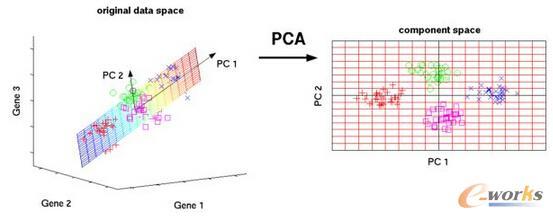Factor models have been widely used in economics and finance. However, the heavy-tailed nature of macroeconomic and financial data is often neglected in the existing literature. To address this issue and achieve robustness, we propose an approach to estimate factor loadings and scores by minimizing the Huber loss function, which is motivated by the equivalence of conventional Principal Component Analysis (PCA) and the constrained least squares method in the factor model. We provide two algorithms that use different penalty forms. The first algorithm, which we refer to as Huber PCA, minimizes the $\ell_2$-norm-type Huber loss and performs PCA on the weighted sample covariance matrix. The second algorithm involves an element-wise type Huber loss minimization, which can be solved by an iterative Huber regression algorithm. Our study examines the theoretical minimizer of the element-wise Huber loss function and demonstrates that it has the same convergence rate as conventional PCA when the idiosyncratic errors have bounded second moments. We also derive their asymptotic distributions under mild conditions. Moreover, we suggest a consistent model selection criterion that relies on rank minimization to estimate the number of factors robustly. We showcase the benefits of Huber PCA through extensive numerical experiments and a real financial portfolio selection example. An R package named ``HDRFA" has been developed to implement the proposed robust factor analysis.
翻译:因子模型在经济学和金融学中得到广泛应用。然而,宏观经济和金融数据的重尾性质常常被忽略。为了解决这个问题并实现鲁棒性,我们提出了一种通过最小化Huber损失函数来估计因子载荷和得分的方法。该方法从普通主成分分析(PCA)和在因子模型中的约束最小二乘法的等价性出发,得到了该函数。我们提供了两个使用不同惩罚形式的算法。第一个算法称为Huber PCA,它将加权样本协方差矩阵包含在其中,并最小化L2型Huber损失。第二个算法涉及按元素的Huber损失最小化,可以通过迭代Huber回归算法来解决。我们研究了元素级Huber损失函数的理论最小化器,并证明当个体误差具有有界二阶矩时,它具有与常规PCA相同的收敛速度。在温和条件下我们也获得了它们的渐近分布。此外,我们提出了一种一致的模型选择准则,该准则依赖于排名最小化来鲁棒地估计因子数量。通过广泛的数字实验和一个真实的金融组合选择示例展示了Huber PCA的优点。我们开发了一个名为“HDRFA”的R软件包来实现所提出的鲁棒因子分析。




